Related Research Articles
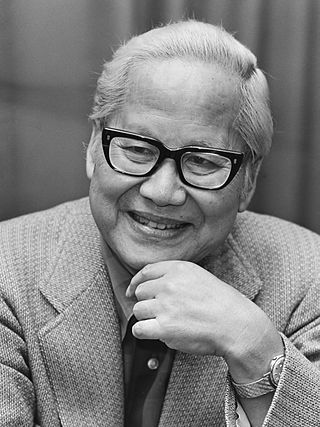
Keye Luke was a Chinese-born American actor, and a founding member of the Screen Actors Guild. He portrayed Lee Chan, the "Number One Son" in the Charlie Chan films, the original Kato in the 1939–1941 Green Hornet film serials, Brak in the 1960s Space Ghost cartoons, Master Po in the television series Kung Fu, and Mr. Wing in the Gremlins films. He was the first Chinese-American contract player signed by RKO, Universal Pictures and Metro-Goldwyn-Mayer and was one of the most prominent Asian actors of American cinema in the mid-20th century.

Dr. James Kildare is a fictional American medical doctor, originally created in the 1930s by the author Frederick Schiller Faust under the pen name Max Brand. Shortly after the character's first appearance in a magazine story, Paramount Pictures used the story and character as the basis for the 1937 film Internes Can't Take Money, starring Joel McCrea as Jimmie Kildare. Metro-Goldwyn-Mayer (MGM) subsequently acquired the rights and featured Kildare as the primary character in a series of American theatrical films in the late 1930s and early 1940s. Several of these films were co-written by Faust, who also continued to write magazine stories and novels about the character until the early 1940s. Kildare was portrayed by Lew Ayres in nine MGM films. Later films set in the same hospital featured Dr. Gillespie. Ayres returned to voice the Kildare character in an early 1950s radio series. The 1961–1966 Dr. Kildare television series made a star of Richard Chamberlain and gave birth to a comic book and comic strip based on the show. A short-lived reboot of the TV series, Young Doctor Kildare, debuted in 1972 and ran for 24 episodes.

Mark Greene, M.D. is a fictional character from the American medical drama series ER. Portrayed by actor Anthony Edwards, he first appeared in the series' pilot episode, as well as subsequently appearing as one of the principal characters until the end of the eighth season. Edwards later returned to make a guest appearance in the fifteenth season episode "Heal Thyself".

Charles Van Dell Johnson was an American actor and dancer. He had a prolific career in film, television, theatre and radio, which spanned over 50 years, from 1940 to 1992. He was a major star at Metro-Goldwyn-Mayer during and after World War II, known for his upbeat and "all-American" screen persona, often playing young military servicemen, or in musicals.

Young Dr. Kildare is a 1938 American drama film directed by Harold S. Bucquet and starring Lew Ayres as Dr. James Kildare, an idealistic, freshly graduated medical intern, who benefits greatly from the wise counsel of his experienced mentor, Dr. Leonard Gillespie. The film was based on a story and characters created by author Frederick Schiller Faust, writing as Max Brand.
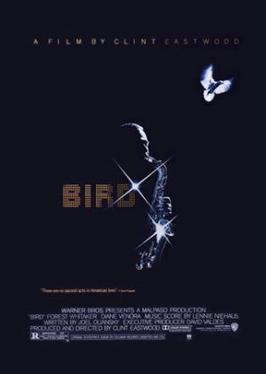
Bird is a 1988 American biographical musical drama film about jazz saxophonist Charlie "Bird" Parker, directed and produced by Clint Eastwood from a screenplay by Joel Oliansky. The film stars Forest Whitaker as Parker, and Diane Venora. It is constructed as a montage of scenes from Parker's life, from his childhood in Kansas City, through his early death at the age of 34.
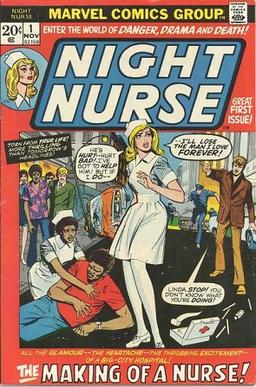
Night Nurse is a comic-book series published by Marvel Comics in the early 1970s. Linda Carter, one of the series' three central characters, previously was the lead of an earlier Marvel series, Linda Carter, Student Nurse, published in 1961. Other central characters included Georgia Jenkins and Christine Palmer; both Linda Carter and Christine Palmer would later be explicitly incorporated into the larger 616 Marvel Universe comics.
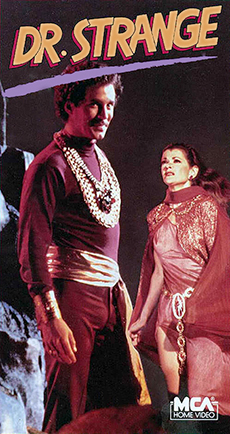
Dr. Strange is a 1978 American superhero television film based on the Marvel Comics fictional character of the same name, co-created by Steve Ditko and Stan Lee. Philip DeGuere directed the film and wrote it specifically for television, and produced the film along with Alex Beaton and Gregory Hoblit. Stan Lee served as a consultant on the film, which was created as a pilot for a proposed television series. Dr. Strange stars Peter Hooten in the title role, along with Jessica Walter, Eddie Benton, Clyde Kusatsu, Philip Sterling, and John Mills. The film aired on September 6, 1978, in a two-hour block from 8pm to 10pm on CBS, the same network that, at that time, aired The Amazing Spider-Man and The Incredible Hulk; CBS did not pick up Dr. Strange as a series.

Disputed Passage is a 1939 American drama war film directed by Frank Borzage and starring Dorothy Lamour, Akim Tamiroff, John Howard, Judith Barrett and William Collier, Sr. Set in war-torn China, the film was described by The New York Times as a "lavish soap opera". The film was based on the best-selling novel of the same name by Lloyd C. Douglas, and was produced by Paramount Pictures.

Flight Command is a 1940 American U.S. Navy film from MGM, produced by Frank Borzage and directed by J. Walter Ruben and Frank Borzage (uncredited), starring Robert Taylor, Ruth Hussey, and Walter Pidgeon. It has the distinction of often being credited as the first Hollywood film glorifying the American military to be released after the outbreak of World War II in Europe, a year before the U.S. entered the conflict.

International Settlement is a 1938 American drama film directed by Eugene Forde and starring Dolores del Río, George Sanders and June Lang. It is set in the Shanghai International Settlement during the Sino-Japanese War. In the film, a gun runner falls in love with a beautiful French singer.

Dr. Kildare Goes Home is a 1940 American drama film directed by Harold S. Bucquet, starring Lew Ayres, Lionel Barrymore and Laraine Day. It is the fifth in the MGM series of nine films with Lew Ayres as Dr. Kildare made from 1938–1942.
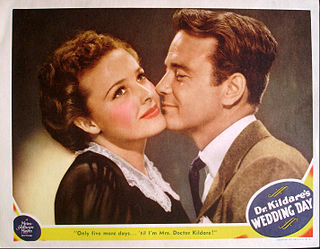
Dr. Kildare's Wedding Day is a 1941 American drama film directed by Harold S. Bucquet and starring Lew Ayres, Lionel Barrymore, and Laraine Day. It is the eighth of a total of nine Dr. Kildare pictures made by the Metro-Goldwyn-Mayer. When MGM decided to move up-and-coming star Laraine Day out of the "Dr. Kildare" series, the studio did so in a startlingly dramatic fashion. Adding extra interest to this film in the Kildare series, Barrymore composed the music credited to the Cornelia Bartlett character, and actor Red Skelton provides comic relief.

Calling Dr. Gillespie is a 1942 drama film directed by Harold S. Bucquet, starring Lionel Barrymore, Donna Reed and Philip Dorn. This was a continuation of the series that had starred Lew Ayres as Dr. Kildare. Ayres, however, had declared conscientious objector status to World War II, and was taken off the film. Kildare's mentor, Dr. Gillespie, portrayed here and in earlier films by Barrymore, became the lead character. In this first Kildare-less entry, Gillespie has a new assistant, refugee Dutch surgeon Dr. John Hunter Gerniede.

Calling Dr. Kildare is a 1939 film in the Dr. Kildare series. Directed by Harold S. Bucquet, it stars Lew Ayres as the young Dr. Kildare and Lionel Barrymore as Dr. Gillespie, his mentor. The second of MGM's series of Kildare films, it introduces Laraine Day as nurse Mary Lamont, the love of Kildare's life.

Three Men in White is a 1944 American comedy-drama film in the Dr Kildare series directed by Willis Goldbeck. It stars Lionel Barrymore, Van Johnson, and Marilyn Maxwell. Ava Gardner has a supporting role.

Dark Delusion is a 1947 American drama film directed by Willis Goldbeck and starring James Craig, Lionel Barrymore, and Lucille Bremer. Produced and released by Metro-Goldwyn-Mayer, it was the last film in the Dr. Kildare film series which stretched back to 1937.
Dr. Gillespie's Criminal Case is a 1943 film in the Dr. Kildare series. Based on characters created by Max Brand. The third of MGM's Dr. Gillespie series to dispense with the services of Dr. Kildare after Dr. Kildare's Victory (1942).

Between Two Women, made in 1945, was the sixteenth film in the Dr. Kildare series. It was the fourteenth of fifteen in which Lionel Barrymore starred as Dr. Leonard B. Gillespie. The film following was Dark Delusion (1947), which was the last in the Dr. Kildare series released by Metro-Goldwyn-Mayer (MGM). This was the last of Van Johnson's character, Dr. Randall 'Red' Adams, also seen in three previous Kildare films.
References
- 1 2 3 The Eddie Mannix Ledger, Los Angeles: Margaret Herrick Library, Center for Motion Picture Study.
- ↑ "Dr. Gillespie's New Assistant".